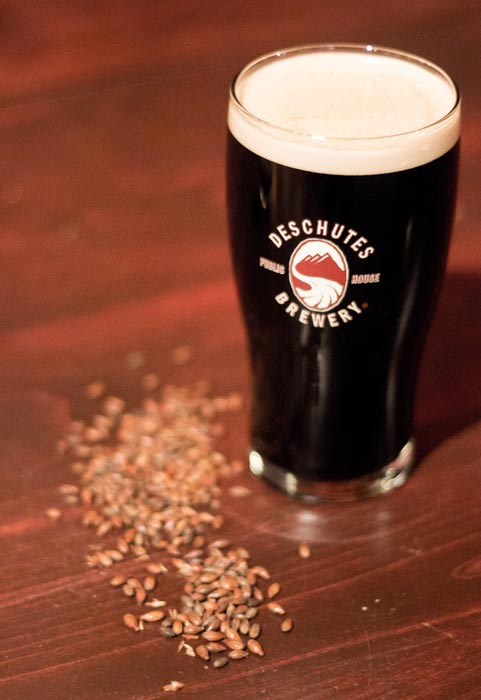
Oregon-based Deschutes Brewery knows a thing or two about brewing a great stout. Their flagship stout, Obsidian Stout, has earned medals in past years of the Great American Beer Festival® along with some of their specialty stout offerings.
We recently spoke with Deschutes’ Brewmaster Brian Faivre and he offered up five tips to help homebrewers bring their stouts to the next level.
1. Utilize the Boil for Flavor Development
Process is often overlooked in how it can affect a beer’s flavor. Your homebrewing equipment has the potential to create some really unique flavor characteristics, and the boil kettle has some of the most potential with its ability to caramelize sugars. Here at Deschutes Brewery, we pay extra attention to the “type” of boil in our kettles, as we know how much this affects the flavor of our beers.
2. Go Easy on the Grind of Dark Malts
We find that the fine-crushed dark malts can contribute harsh astringency that we dont care for in our stouts. We coarsely grind our highly friable malts. In our Cascadian dark ale, we go through the extra effort of cold-mashing and lautering the dark portion of the grain bill to the kettle and follow that with a traditional mash in an attempt to only extract the dark color. Consider this technique in your homebrewed stouts.
3. Leave a Little Sugar Behind
Most stouts benefit by not overly drying them out and leaving behind some residual sweetness. Our house yeast is a low attenuating, high flocculating strain. We target a RDF* of 61% in the Obsidian Stout. The touch of sweetness balances nicely with the 6.4% ABV and roasty malt bill.
*Real degree of fermentation (RDF) measures the degree to which sugar in wort has been fermented into alcohol in beer, defined as “attenuation” (definition from The Oxford Companion to Beer)
4. Bottle Condition
The majority of Deschutes Brewery beers benefit from a secondary fermentation and conditioning in the bottle. We utilize our house yeast for this purpose. With its high flocculating characteristics, it settles compactly on the bottom of the bottle, protects against oxidation from the packaging process, cleans up excessive diacetyl and builds some additional carbonation and nice characteristics that come from a secondary fermentation. We target approximately 100-150 thousand cells per millileter of beer to be conditioned.
5. Serve on Nitro for Something Special
One of the most beautiful things, in my opinion, is perfectly cascading Nitro Obsidian Stout. The visual appearance and smooth, velvety texture pairs so nicely with stout. Consdier taking your next homebrewed stout to the ultimate level of presentation.



Share Post